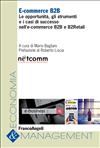Identità locale e dimensioni di deprivazione relativa in due contesti naturali This research takes into account both the theory of social identity and of relative deprivation as tools for understanding behavioral strategies. More specifically, it focuses on two questions: firstly, whether a relationship between local identification and disadvantage perception, in both its egotistic and fraternal components, exists; secondly, whether individual or collective behaviors are indeed correlated to the two variables. In addition, it also considers variables concerning perception of social structure (permeability, stability or legitimacy), and it investigates whether they are related to local identity, relative deprivation, and to behavioral strategies. The subjects of this study are the members of two different groups in neighboring areas of inland Sardinia; the hypothesis is that, notwithstanding geographic proximity, group membership awareness is related to differences in both disadvantage perception and behavioral reactions. Our study shows that both local identity and relative deprivation are important factors for understanding behavioral strategies; such behavior is more probable in conditions of strong identification, and it is either individual or collective according to, respectively, perception of egoistic or fraternal deprivation. In addition, local identification, disadvantage perception, and behavioral strategies are related to perception of social structure. In fact, impermeability and instability are associated to decreasing identification levels and increasing deprivation perception; in conditions of stability, impermeability and illegitimacy, they are also associated with an increase in collective behaviors.




